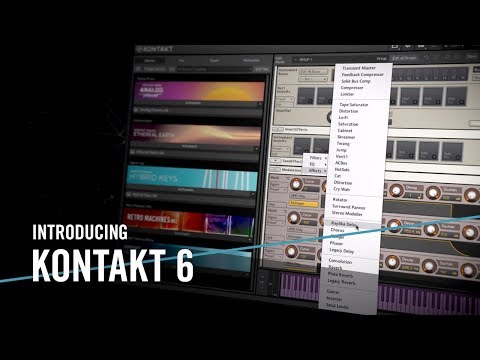

In practice, this can be used to move smoothly between velocity layers of multisampled instruments, but more powerful is the option to morph between different sounds completely. Put simply, this combines an FFT filter module and spectral analysis to enable morphing from one sound to another (as opposed to simply crossfading between samples). The other big news is AET, or Authentic Expression Technology. With NCW patches, we did find that some digital artifacts would afflict the sound near the maximum number of voices, but simply raising the voice limit alleviated this. In use, there seems to be no additional CPU hit associated with using NCW, and the RAM preload is reduced, as you might expect. Although the library doesn't come ready compressed, Kontakt 4 can batch convert any existing library - a good job for a rainy afternoon. First is the inclusion of a lossless data compression format (NCW), which is said to achieve between 30% and 50% space savings. There are a couple of new technical features that should get producers talking.


You'll also find a few escapees from discontinued NI products, such as Elektrik Piano, and some new VSL-sourced solo strings for the Orchestral collection, too. This equates to over 1000 instruments and they come pre-tagged, so you can search by type, timbre, genre and so on. On the sounds front, the bundled library is 10GB larger than Kontakt 3's and is now made up of seven collections: Orchestral, World, Vintage, Band, Synth, Urban Beats and Choir, the latter being the latest addition. Existing users will welcome more subtle changes, such as the manually scalable interface window. You'll also find tag-based browsing, much like Kore, and 300 new impulse responses for the convolution processor. However, there's no simple way of combining the new or 'upgraded' sample content with that from previous versions - if you're upgrading, you'll be reinstalling sample content that you already have, which is a pain.
#NATIVE INSTRUMENTS KONTAKT 4 FULL#
But the improved graphics and feature tweaks have given the library a genuine ROMpler feel, while retaining the full back-end flexibility. We'll concede that much of this was in Kontakt 3. The latter even enables pattern-style programming. However, it's the Urban Beats category that we found most impressive, with its separate tabbed interfaces for hits, loops and the groovebox. "The improved graphics and feature tweaks have given the library a genuine ROMpler feel." You can also select articulations for many of the orchestral patches. Each of the seven library categories has its own skin, but beyond this, features are instrument-dependent, ranging from ready-made EQ controls and playback randomisation to velocity response curves and one-touch, scale-specific chord harmonising.


 0 kommentar(er)
0 kommentar(er)
